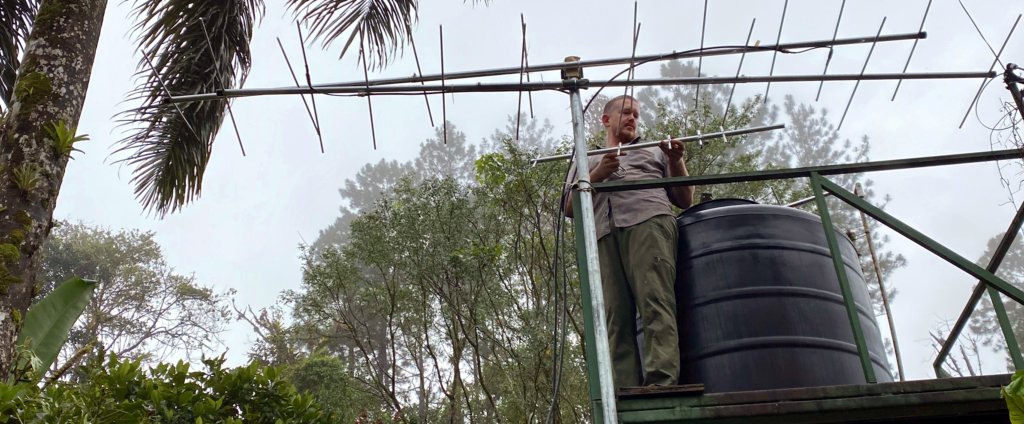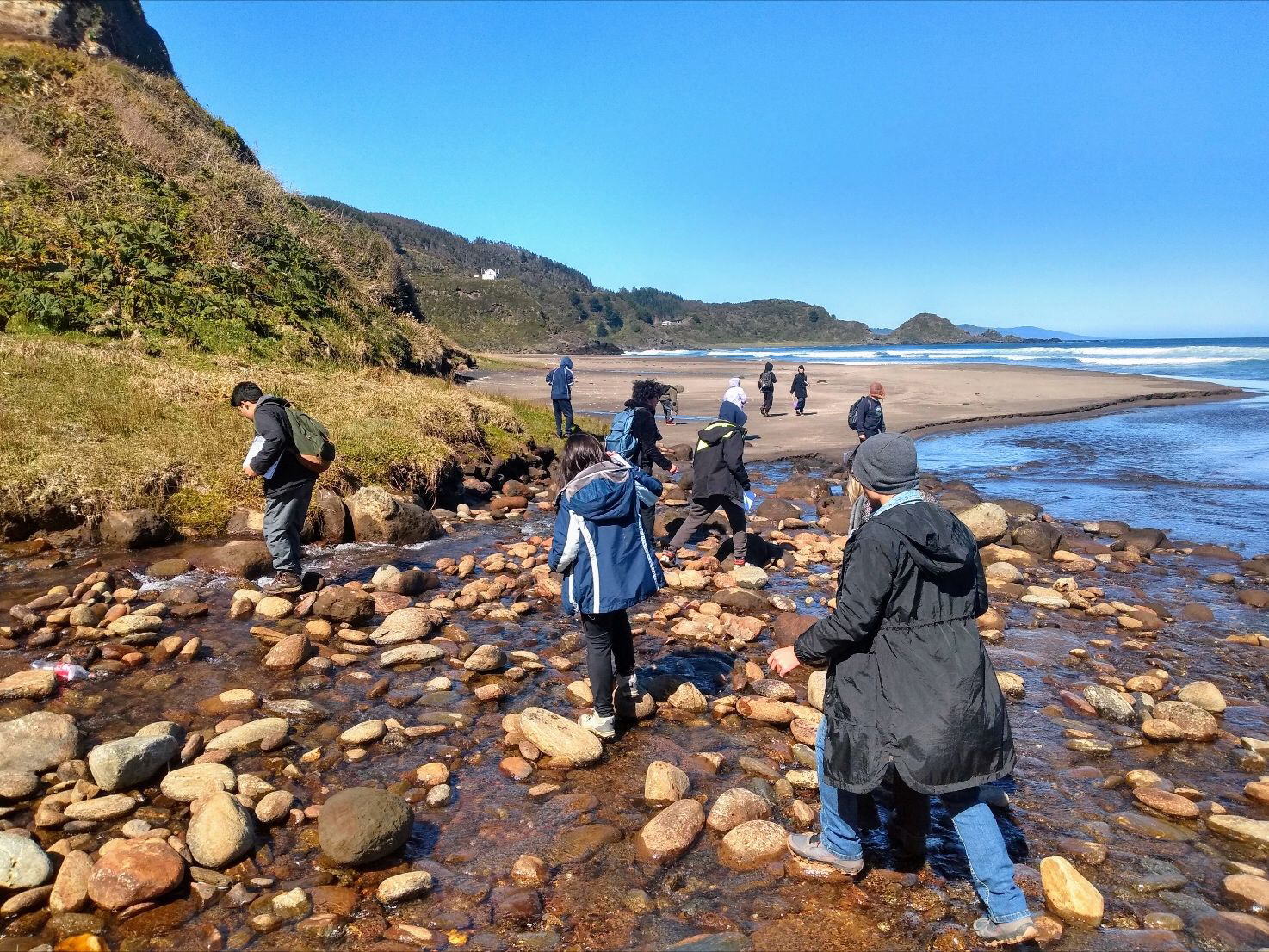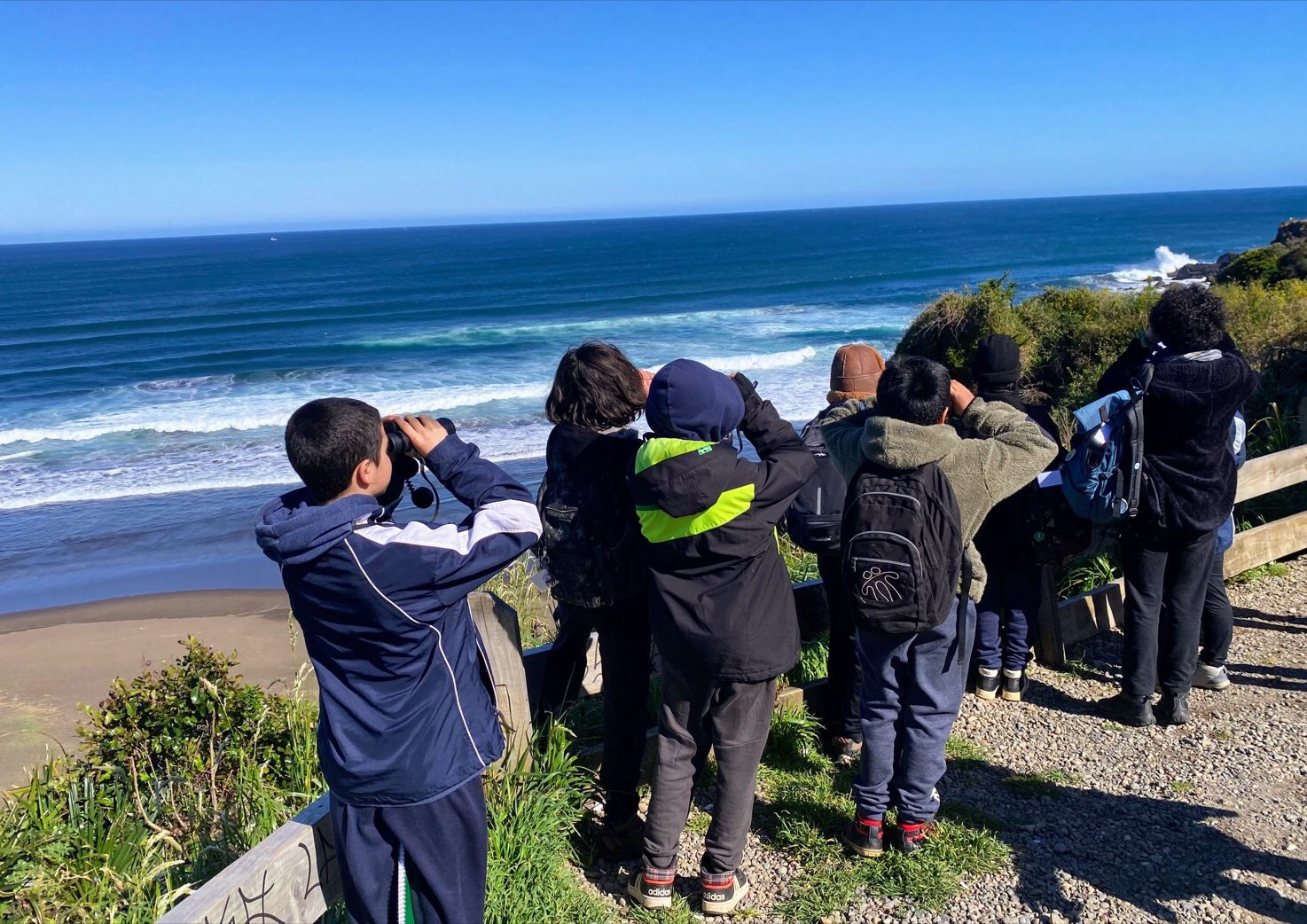
A picture says a thousand words. Take the one currently displayed on Texas A&M University doctoral student Daniel De Jesús' LinkedIn profile featuring the following proverb, overlaid on an endless expanse of tranquil blue sea:
Give people a fish, and you will feed them for a day. Teach people to fish, and you will feed them for a lifetime.
Inspirational merit aside, it’s the fine print below the proverb that speaks volumes about De Jesús ’20 and his true compass in the sea of life:
“I believe the same goes for student education.”
Thanks in part to De Jesús and a larger educational effort that began as a uniquely symbiotic connection between likeminded researchers from two different continents, dozens of middle school students across Latin America are embracing their newfound passion for migratory bird science and the fundamental role migratory birds — which are in severe international decline — play in the conservation of the global ecological balance.
De Jesús is working in collaboration with Dr. Kira Delmore, an assistant professor in the Department of Biology, his Ph.D. advisor, Dr. Benjamin Herman, an associate professor jointly appointed in Biology and the Department of Teaching, Learning and Culture, and two non-governmental organizations (NGOs) from Latin America to develop educational tools focused on bird migration and evolution. The goal of their project, originally inspired by Delmore's research on seasonal migration and funded in part by her four-year National Science Foundation Faculty Early Career Development (CAREER) Award, is to create education models that help teachers and their students recognize the connections between different ecosystems and their contributions to biological diversity.
For The Birds

For the past five years, Delmore has been using a global network of radio towers known as Motus and run by the organization Birds Canada to collect data on migration routes for the Swainson’s thrush, a migratory bird with eastern- and western-migrating subspecies that annually travel from breeding grounds in northwestern North America via Mexico to Central and South America. Because many of these radio towers are hosted by schools or education-based NGOs, her project has proven ideal for providing a cross-continental collaborative educational experience in both English and Spanish to ensure maximum impact across the migration routes of the thrush.
Point of fact, the team has the Swainson’s thrush, Motus and keen observation to thank for its most recent expansion, from personnel to progress. Finca Cántaros Environmental Association, founded in 2020 by 2016 Cornell University natural resources Ph.D. graduate Dr. Lilly Briggs as a nonprofit organization dedicated to environmental education, installed the second Motus station in all of Costa Rica. When Briggs noticed in 2021 that their Motus station was detecting almost exclusively Swainson’s thrushes tagged under Delmore’s “BC Interior Thrushes” project, she contacted Delmore to describe the environmental education focus of her organization and to open the door to potential collaboration. Delmore responded soon thereafter with interest and her own ideas, and Briggs says the rest flowed from there.
All of this, thanks to the birds — and the Motus stations — that connect us.

Bridging Skies & Science
The team's educational modules, which are also grounded by Herman’s expertise in the nature of science pedagogy and socio-scientific issues, are being piloted not only at Briggs' NGO in Costa Rica but also at an NGO in Chile — The Global Alliance for Animals and People (GAAP), which is co-directed by Guillermo Pérez. To date, De Jesús has traveled to both countries to work with Briggs’ and Pérez’s respective staffs as well as teachers and students at various schools as part of the team’s pilot program.
“These pilots included the collection of data pre- and post-instruction on how well students understood the topics we covered,” Delmore noted. “We will use them to evaluate the nature of science pedagogy and identify and overcome barriers these underrepresented groups in STEM face.”

In addition to improving educational offerings and highlighting available opportunities for underrepresented groups in STEM research, Delmore says the program’s goal is to showcase the vital part international collaboration can and should play in safeguarding migrating species and the globally interdependent ecosystem.
“International coordination is required to protect migratory songbirds, and it is important to engage the public in environmental education early, especially in countries that still host much of the world’s remaining diversity,” Delmore said. “We are working to do exactly that, reaching students along the full migratory flyway and providing them with hands-on experiences that will improve their motivation and retention of knowledge about the natural world."
Nature Of Science
De Jesús, who is fluent in Spanish and also speaks Portuguese, originally came to Texas A&M in 2018 as a recipient of an NSF Louis Stokes Alliances for Minority Participation (LSAMP) Bridge to the Doctorate Fellowship. He earned a master’s degree in ecology and evolutionary biology in 2021 before beginning his doctorate in science education and describes himself as passionate about teaching and learning — a cause he is happy to see going global as a result of his efforts.

"I am fascinated by the work our team does, not only because it helps establish deep comprehension of complex scientific ideas, but also for allowing me to witness students' consistent eagerness to share their thinking in a structured and analytical manner, right from day one,” De Jesús said. “Seeing students' enthusiasm to take intellectual risks, even if this might be intimidating for some, reveals that students can feel both stimulated and safe within the classroom environment, allowing them to unreservedly navigate this crucial learning process. These experiences inspire me to continue expanding our professional work into more contexts and communities eager to explore impactful science education aimed at generating solutions for challenging environmental issues across diverse regions of the Americas."
While topics from both Delmore’s and Herman’s research initially inspired the team’s educational resources, Delmore credits the expertise that Briggs and Pérez each contribute from the field of environmental education for bringing them to life. For Briggs, having academic partners like Delmore and on-the-ground collaboration opportunities are key to Finca Cántaros’ strategic efforts to build capacity for reaching broader audiences with a suite of educational resources.
“All of this, thanks to the birds — and the Motus stations — that connect us,” Briggs said.

For his part, Pérez says he has been excited to team up with Texas A&M scientists and inspired by their willingness to adapt the project to address the issue of free-roaming dogs and their impact on migratory birds — a modification he believes further enriched the students' experience.
“It was amazing to see how the students got involved in the discussion of the environmental problem at hand and started offering their own ideas, not expecting the teacher to give them the answers,” Pérez added.
Ultimately, Delmore says the team plans to disseminate their educational materials across the migratory flyway at Motus stations in North, Central and South America. She notes that information from her lab’s research will be critical to designing data-driven conservation plans to ensure that bird species not only survive but also thrive.
“Migrants are facing some of the most severe population declines among birds, and it will take an international effort to reverse their fate, which goes hand-in-hand with our own,” she added.